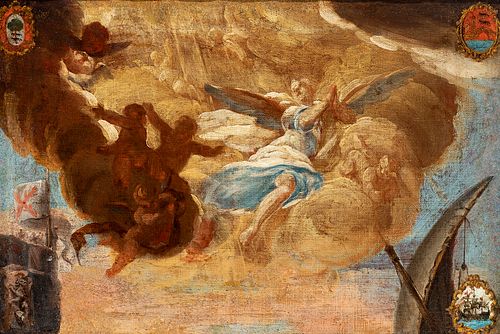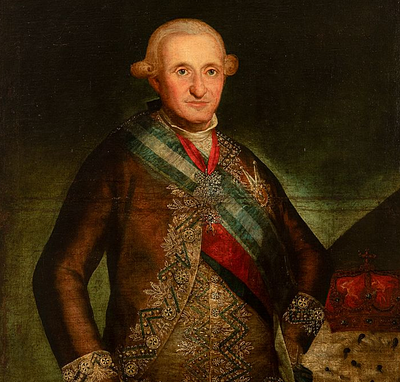Spanish school; second half of the 18th century. "Allegory". Oil on canvas. Relined.
Lot 29
About Seller
Setdart Auction House
Carrer Aragó 346
Barcelona
Spain
Setdart Subastas was born in 2004 and is currently the first online art auction in Spain with solidity, prestige and reliability guaranteed by our more than 60,000 users. Setdart has a young, dynamic and enterprising team ready to successfully manage the purchase and sale of art works through custom...Read more
Estimate:
EUR€2,500 - EUR€3,000
$2,604.17 - $3,125
Absentee vs Live bid
Two ways to bid:
- Leave a max absentee bid and the platform will bid on your behalf up to your maximum bid during the live auction.
- Bid live during the auction and your bids will be submitted real-time to the auctioneer.
Bid Increments
| Price | Bid Increment |
|---|---|
| EUR€0 | EUR€10 |
| EUR€200 | EUR€25 |
| EUR€500 | EUR€50 |
| EUR€1,000 | EUR€100 |
| EUR€3,000 | EUR€200 |
| EUR€5,000 | EUR€500 |
| EUR€10,000 | EUR€1,000 |
| EUR€20,000 | EUR€2,000 |
| EUR€50,000 | EUR€5,000 |
About Auction
By Setdart Auction House
Sep 22, 2021
Set Reminder
2021-09-22 09:30:00
2021-09-22 09:30:00
America/New_York
Bidsquare
Bidsquare : 22nd September - ARAS JÁUREGUI Private Collection - Old Masters, 19th & 20th Century
https://www.bidsquare.com/auctions/setdart-auction-house/22nd-september---aras-j-uregui-private-collection---old-masters-19th-20th-century-7427
ARAS JÁUREGUI Private Collection - Old Masters, 19th & 20th Century Setdart Auction House sofia@setdart.com
ARAS JÁUREGUI Private Collection - Old Masters, 19th & 20th Century Setdart Auction House sofia@setdart.com
- Lot Description
Spanish school; second half of the 18th century. "Allegory". Oil on canvas. Relined. It presents repainting, restorations and a carved and gilded frame from the beginning of the 20th century, with faults. Measurements: 31 x 47 cm; 43 x 52 cm (frame). The composition of this piece indicates to the spectator that it is conceived to be observed from a low point of view, as the central figures that make up the scene are presented to the spectator from above. Formally, the author of this canvas is a follower of the legacy of the great Italian masters of the 17th and 18th centuries. Despite the fact that it is not a work of firm, precise execution, which is perhaps due to the fact that it could be conceived as a sketch for a larger work. The artist's concern for achieving maximum realism stands out. Likewise, an anatomical correction, learned from the Renaissance, can be appreciated, as well as an intense and sophisticated treatment of colour, in total harmony. With regard to the subject matter, it could well be the representation of an allegory, however, it seems to represent the glory of a naval battle. In the centre of the scene, a large angel in a white robe and blue mantle clasps his hands together in prayer as he gazes at a group of little angels who, like him, are immersed in a blaze of glory. The scene is completed by the sail of a ship on the right and what appears to be a section of a port on the left. A large flag with a white cross, adorned with a red cross (the Burgundy cross), which served as the naval and military ensign of the Spanish monarchy, stands out here. Two coats of arms can be seen in the work, one of them with a tree in the centre and two wolves in sabre, representing Biscay, and the other formed by an architecture and two wolves, referring to the city of Bilbao. The scene probably represents the victory of the Battle of the Bay of Biscay, which took place in 1592.
- Shipping Info
-
In-house shipping available. Please inquire at admin@setdart.com.
-
- Buyer's Premium



 EUR
EUR CAD
CAD AUD
AUD GBP
GBP MXN
MXN HKD
HKD CNY
CNY MYR
MYR SEK
SEK SGD
SGD CHF
CHF THB
THB

















